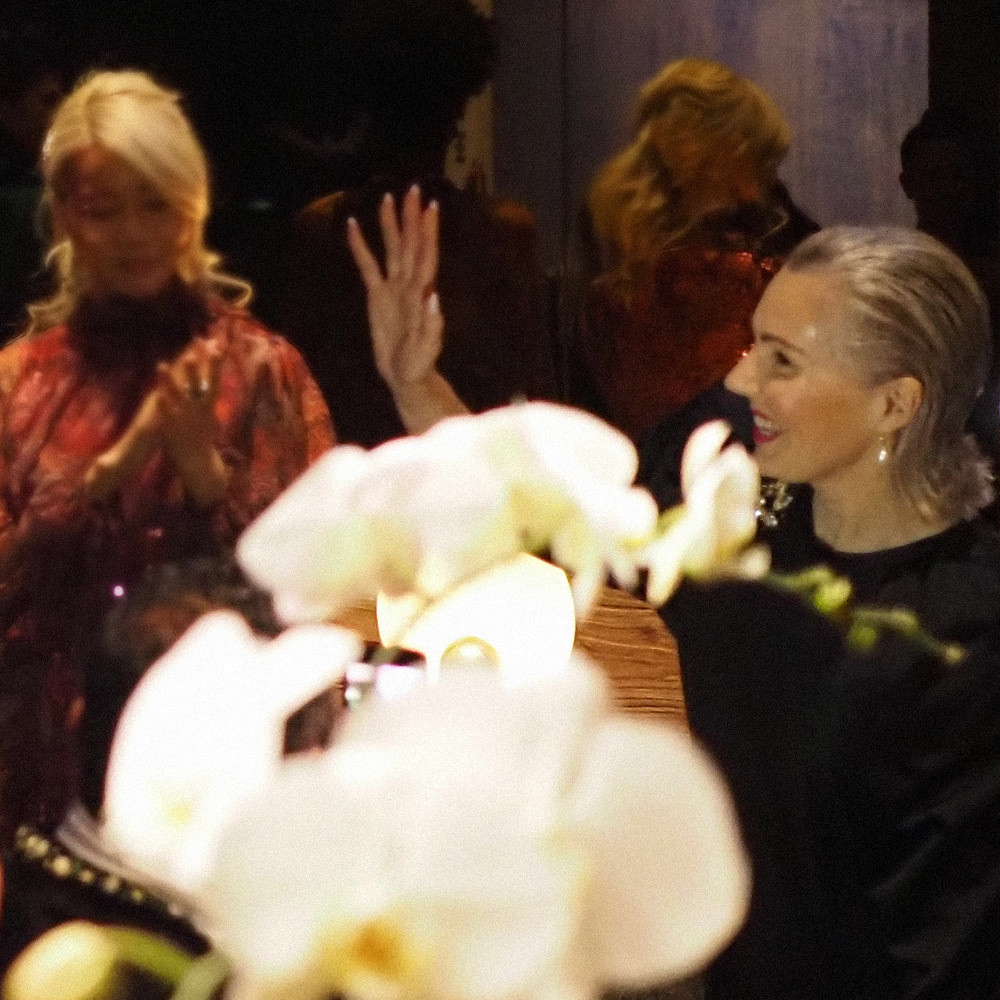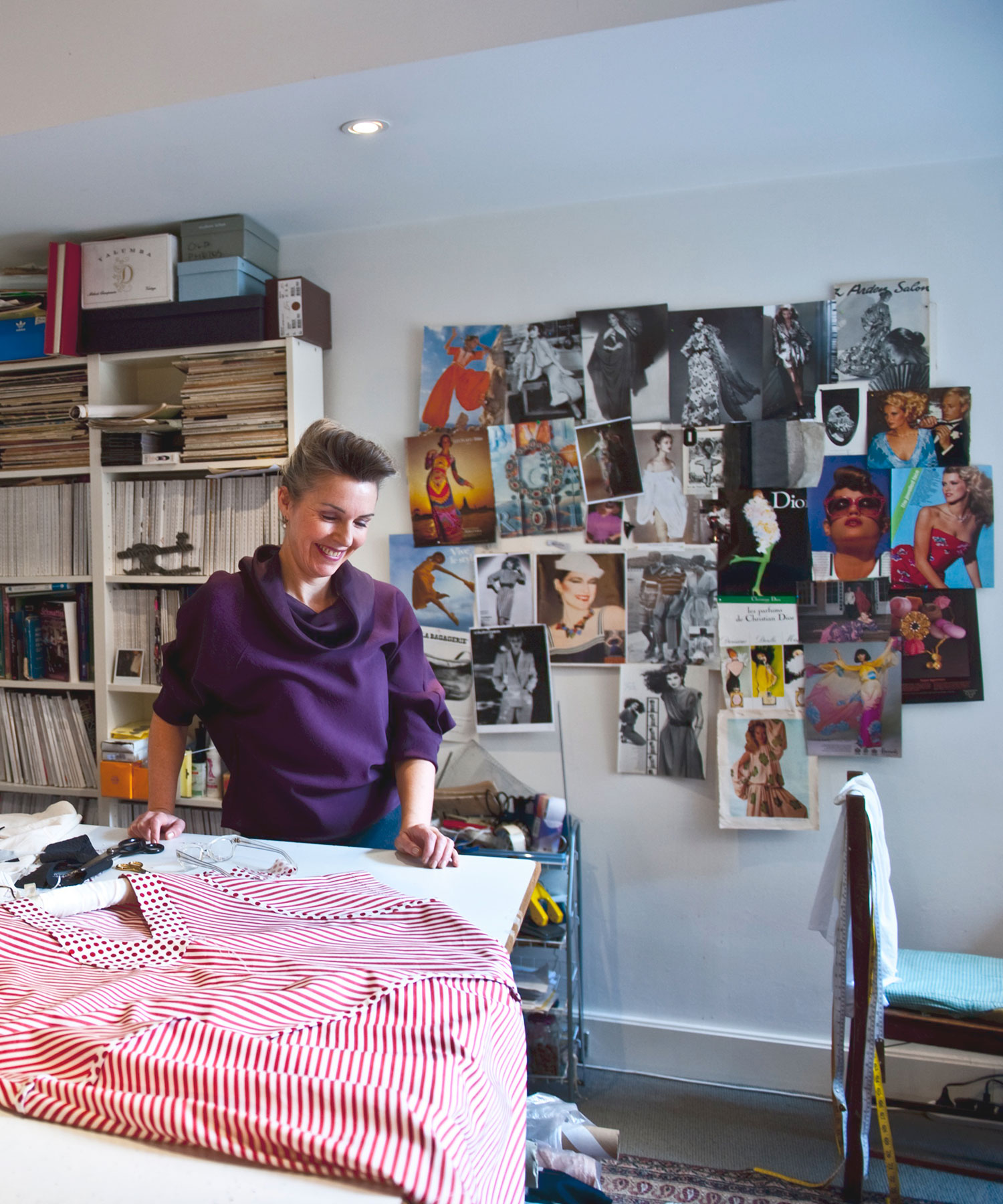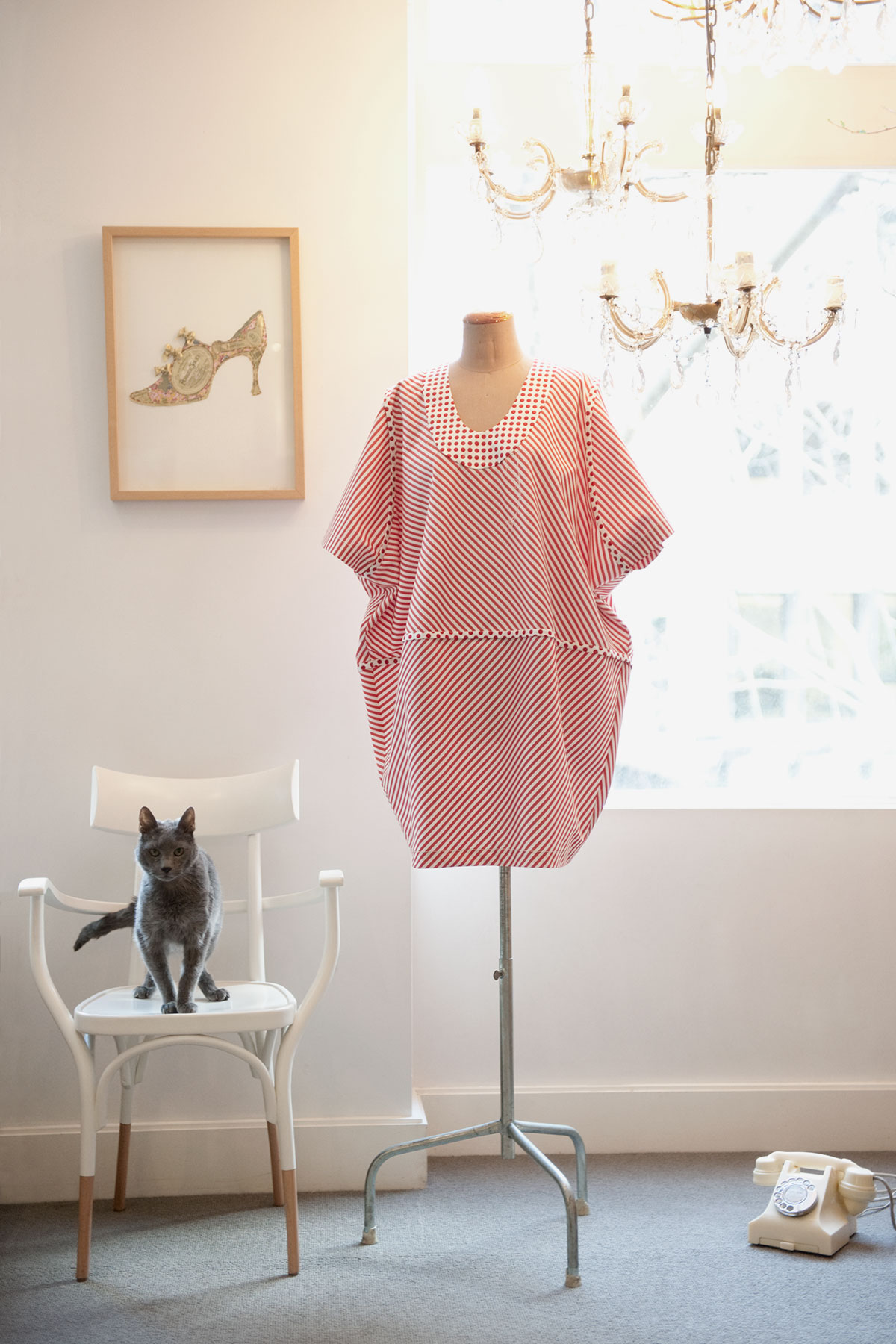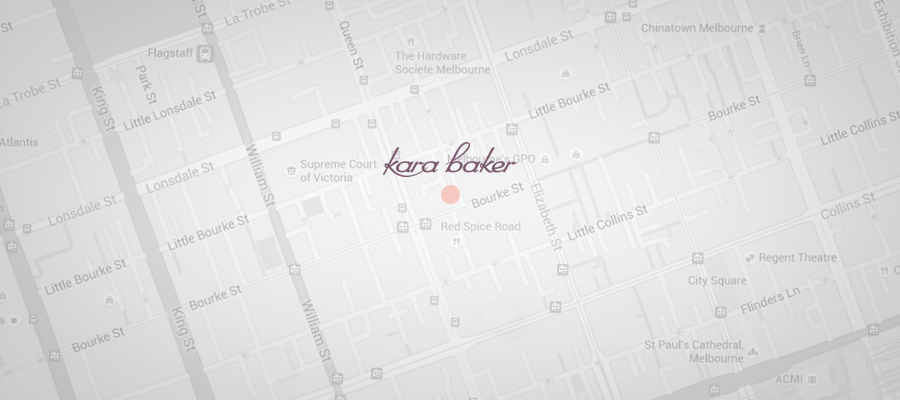At a recent fitting, I witnessed a first-time client on what was, essentially, a blind date. She’d been gifted a garment of her choice, and was quite intrigued – not to say, intimidated – by the offer. A working woman, a single mother, a forty-something academic, she arrived at Kara’s studio just in time for morning tea. Roasted rice green tea from Lupicia to accompany handmade cakes from Brother Bubba Budan, just around the corner on Little Bourke Street. Kara’s salon is a casually elegant affair, the sharp volumes of an industrial loft softened by lush carpeting, intriguing wall hangings (many by Melbourne artist, Gavin Brown) and row upon row of come-hither books. After tea and a casual chat, attention was turned to the rack of samples hanging midway across the room.
At first glance, it’s an enticement of pattern and colour, of billowing sleeves and rouched capuches, dropped waists and capped sleeves – occasionally intersected with solid slashes of inky black silk.
“At first I was a little confronted,” says the client. Let’s call her Anna (name changed to protect the innocent.) “Nothing looked like anything I’d seen in the shops, I didn’t recognize a trend. But being encouraged to try on a few garments demonstrated that sometimes you need to go out of your own comfort zone and be surprised.”
She pulled out a simple, black pencil skirt. Kara suggested a cap-sleeve, patterned silk top to pair with it. And handed her a pair of elegant high heels. The transformation is immediate – rigorously tailored, the waisted skirt dropped to just below knee, creating a demure, almost blocky silhouette. But the centre-front split rising to mid-thigh cantilevers, just so, adding a sexy, seductive edge when the wearer walks. Adjusted to sit just a fraction above the knee, and cinch the waist, following the curve of the hip, it is perfect.
Next Anna chose to try a scoop-back dress, then a ballooning round skirt, almost an avant-garde dirndl. Both also in black. Being petite, they floated on her, making her look a little lost, perhaps even uncomfortable. Until Kara worked her magic.
“Being fitted was a revelation for me. I put the garment on as I would in a retail changing room, and being fairly ‘meh’ about the way it fit, I would have returned it to the rack. But then, having the garment adjusted to fit me really transformed the clothes. I’ve never really considered what a poor compromise buying a mass produced garment is. It’s made me reflect that possibly only 10 percent of my wardrobe actually fits me correctly.”
Next came a curve-ball. Would she try on that kind of blousey smock, with the inset Liberty print bib and the billowing floral silk/cotton sleeves. Just for fun. (It was fun, anyway, to watch her face – I suspect her to have been a goth, in her youth…)







